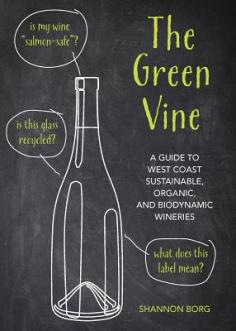You care about where your food comes from. How about your wine? - A charismatic guide to understanding environmentally-friendly wines - from defining labels to reviewing vineyard practices - Features personally-tested profiles of sustainable wines that everyone needs to try - California, Washington, and Oregon rank #1 - 3 nationally as having the most wineries per state Most people don"t want to think about their wine too much; they just want to enjoy it. At the same time, more and more people are thinking about where their food comes from. Why not ask the same questions about wine? It's a product that faces many of the same industry, environment, and economic issues as that sustainable steak or fresh home-grown salad on your plate. Traditional wine production is currently under threat from increasingly homogenized commercial processes and suffers from a large carbon footprint - from bottle and cork materials to water runoff and erosion. Many winemakers are starting to take environmental stewardship very seriously, changing how they grow grapes and make wine. With The Green Vine, wine expert Shannon Borg demystifies the terms of sustainable wine-making and lays out a simple guide to West Coast wines and wineries that use both historical and modern sustainable practices. She explains why it's important to consider how wine is produced and packaged, and why growing methods, soil health, and water resources matter. She then embarks on a wine-tasting tour of nearly 200 sustainable wineries in Washington, Oregon, Northern California, British Columbia, and Idaho - profiling the winemakers and farmers who are leading the Green Wine movement.


